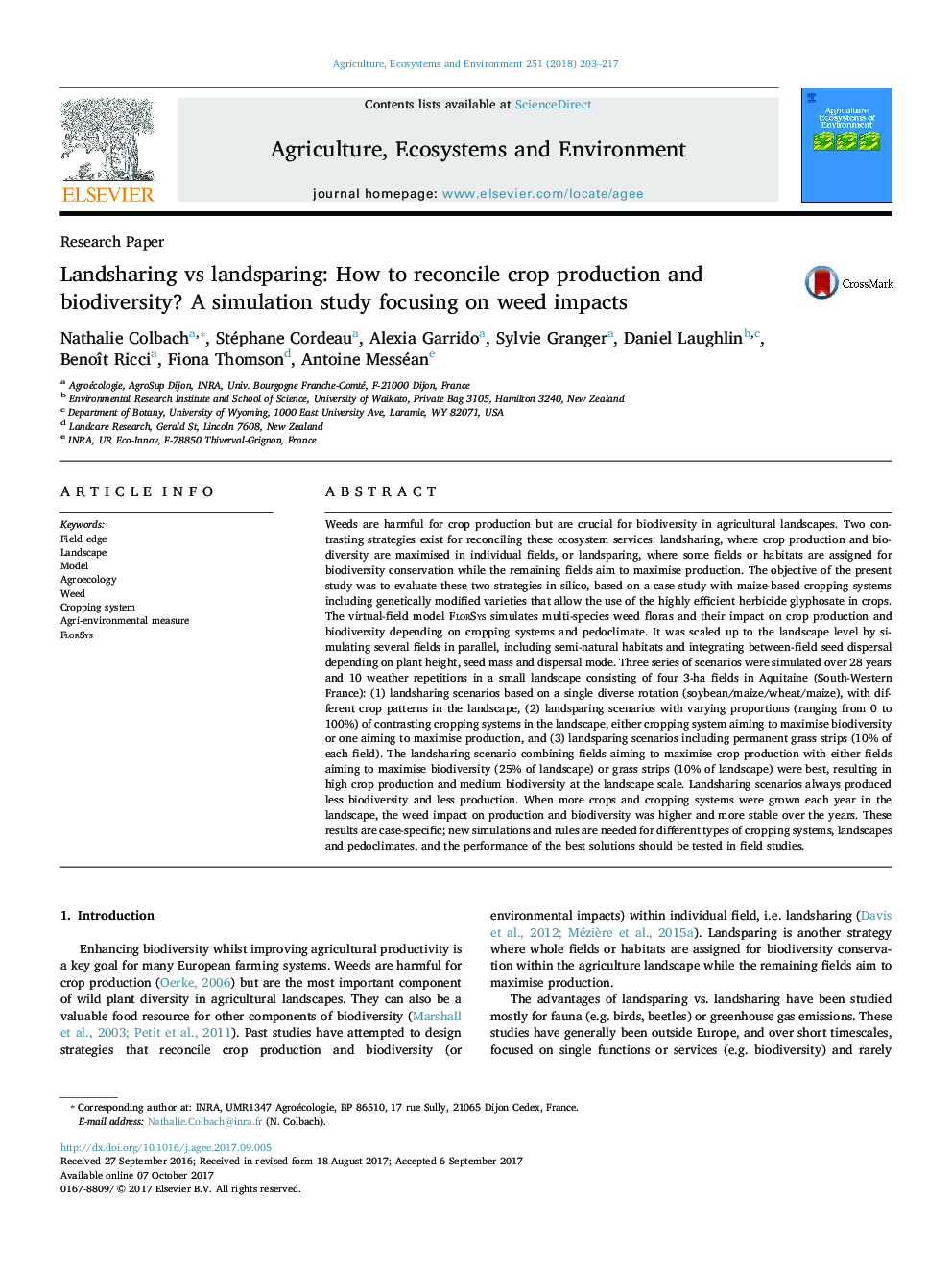| کد مقاله | کد نشریه | سال انتشار | مقاله انگلیسی | نسخه تمام متن |
|---|---|---|---|---|
| 5537789 | 1552001 | 2018 | 15 صفحه PDF | دانلود رایگان |
- We aim to reconcile crop production and biodiversity in weed management.
- We simulated landsharing and landsparing scenarios with a weed dynamics model.
- Weed impact increased with the diversity of crops grown each year in the landscape.
- It was possible to reconcile crop production and weed-mediated biodiversity.
- Landsparing including fields or grass strips maximising biodiversity was best.
Weeds are harmful for crop production but are crucial for biodiversity in agricultural landscapes. Two contrasting strategies exist for reconciling these ecosystem services: landsharing, where crop production and biodiversity are maximised in individual fields, or landsparing, where some fields or habitats are assigned for biodiversity conservation while the remaining fields aim to maximise production. The objective of the present study was to evaluate these two strategies in silico, based on a case study with maize-based cropping systems including genetically modified varieties that allow the use of the highly efficient herbicide glyphosate in crops. The virtual-field model FLORSYS simulates multi-species weed floras and their impact on crop production and biodiversity depending on cropping systems and pedoclimate. It was scaled up to the landscape level by simulating several fields in parallel, including semi-natural habitats and integrating between-field seed dispersal depending on plant height, seed mass and dispersal mode. Three series of scenarios were simulated over 28 years and 10 weather repetitions in a small landscape consisting of four 3-ha fields in Aquitaine (South-Western France): (1) landsharing scenarios based on a single diverse rotation (soybean/maize/wheat/maize), with different crop patterns in the landscape, (2) landsparing scenarios with varying proportions (ranging from 0 to 100%) of contrasting cropping systems in the landscape, either cropping system aiming to maximise biodiversity or one aiming to maximise production, and (3) landsparing scenarios including permanent grass strips (10% of each field). The landsharing scenario combining fields aiming to maximise crop production with either fields aiming to maximise biodiversity (25% of landscape) or grass strips (10% of landscape) were best, resulting in high crop production and medium biodiversity at the landscape scale. Landsharing scenarios always produced less biodiversity and less production. When more crops and cropping systems were grown each year in the landscape, the weed impact on production and biodiversity was higher and more stable over the years. These results are case-specific; new simulations and rules are needed for different types of cropping systems, landscapes and pedoclimates, and the performance of the best solutions should be tested in field studies.
Journal: Agriculture, Ecosystems & Environment - Volume 251, 1 January 2018, Pages 203-217
